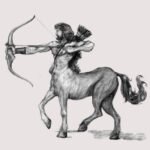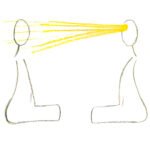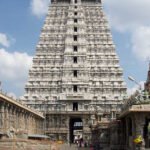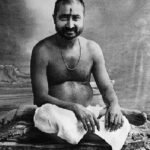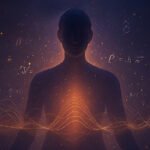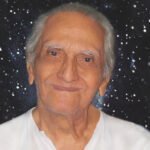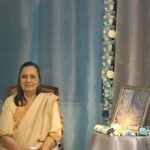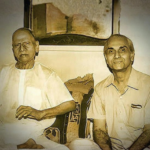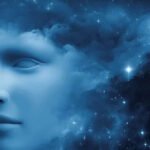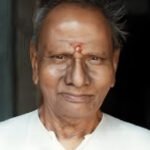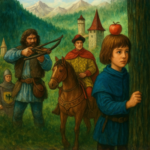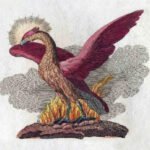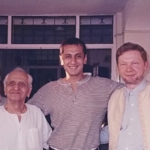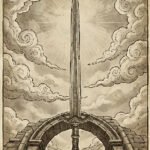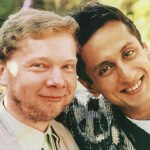April 23, 2018
Science and Spirituality PART 2 – The Illusion of Control in Chronology of Life
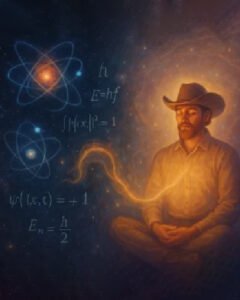
Preface
Time has its own mind. We plan the order of things, fix dates, and expect life to follow. But time, it seems, enjoys taking its own route. Some things happen early, some take longer, and a few never arrive.
This reflection grew from noticing how life unfolds on its own schedule. Science helps us understand time, its patterns, its logic, its flow. Spirituality points to what lies beyond that flow, something timeless that quietly holds everything together.
When we begin to see this, waiting feels easier. We stop worrying about what should happen next. The story of life starts to look less like a series of deadlines and more like a slow river, moving at its own pace.
Introduction
We often glide through life wrapped in the comforting illusion that we are in control of our thoughts, actions, decisions, and ultimately, our destiny. But what if that very sense of control is a mental construct, a narrative spun by our brain to make sense of unfolding experience? Unveiling ‘The Illusion of Control Through The Chronology Of Life’ embarks on a journey across the human lifespan – from pre-birth to beyond death – blending cutting-edge science with timeless spiritual wisdom. Each chapter follows a clear rhythm: a relatable context, scientific insights grounded in research, spiritual perspectives from diverse traditions, and a reflective pause inviting deeper understanding. This layered approach mirrors how we learn – from external experience to inner realization – gradually revealing that what we call ‘doing’ is less personal authorship and more cosmic choreography.
1. Before Birth – Genetic Blueprints and Cosmic Karma
Before we even open our eyes to the world, much of our life is already set in motion. Our bodies carry inherited traits and patterns passed down through generations, quietly shaping who we are without our say. From the earliest moment, we step into a life that’s already underway like catching a train mid-journey where so much is beyond our control. We come into a story already being told, and the idea that we’re fully in charge is just an illusion we grow into later.
Scientific Reference:
The Human Genome Project revealed that approximately 3 billion base pairs in DNA determine hereditary traits, underscoring that much of our physical and predisposed makeup is encoded before birth and beyond conscious influence (Lander et al., 2001). Epigenetic studies demonstrate that environmental factors can modify gene expression, but the underlying genetic code remains fixed, reinforcing that birth traits are governed by inherited blueprints rather than autonomous creation (Jablonka & Lamb, 2002).
Spiritual Connect:
Bhagavad Gita Chapter 2, Shloka 27 says: “For the soul, there is neither birth nor death at any time. It has not come into being, does not come into being, and will not come into being. It is unborn, eternal, ever-existing, and primeval; it is not slain when the body is slain.” This verse firmly establishes that the soul transcends physical birth and death, implying that birth is merely the soul’s entry into a predetermined physical form, not an act of personal control. And the Rigveda 10.129.1 adds: “Then even nothingness was not, nor existence – there was no air then, nor the heavens beyond it. What covered it? Where was it? In whose keeping?” This verse points to the mystery and grandeur of cosmic creation, underscoring that birth and existence unfold as part of an inscrutable cosmic design beyond human volition.
Deeper Reflection:
Our existence is framed by forces and codes that precede conscious awareness, revealing that the illusion of control begins at the very threshold of life. By recognizing that birth itself is governed by unchangeable cosmic and genetic laws, we begin to understand that autonomy is a layered experience – shaped by prior causes and conditions outside our grasp. This insight shocks us into humility, opening the door to surrendering the false notion of being the ultimate doer, and invites us to embrace life as a flowing expression of a greater, unseen order.
2. Infancy – Reflexes and Early Conditioning
At life’s very beginning, before words or reason, our actions are automatic reflexes – grasping, crying, startling – pure biology doing its thing without conscious choice. There’s no “I” making decisions, just built-in responses running on autopilot. Even from these earliest moments, control is an illusion; we are more vessels of nature’s programming than independent agents. This sets the stage for everything that follows – our sense of “doing” is layered on top of a foundation already laid down by reflex and conditioning.
Scientific Reference:
Research by Sherrington (1906) on reflex arcs elucidates how simple neural circuits produce automatic reflexes without brain involvement, proving that early infant responses are hardwired and not consciously controlled. Studies in developmental psychology, such as those by Pavlov and Watson, demonstrate classical conditioning occurring even in infancy, where external stimuli create automatic behavioural associations, reinforcing that early learning is involuntary and not the product of conscious decisions (Watson & Rayner, 1920).
Spiritual Connect:
Bhagavad Gita Chapter 3, Shloka 27 reveals: “All actions are performed by the qualities of nature; the self, deluded by ego, thinks ‘I am the doer.’” This verse decisively clarifies that actions – even the most basic – are driven by innate qualities (guna) and not by the self’s independent volition, revealing early reflexes and conditioning as expressions of nature’s design, not free will. The Quran, Surah An-Najm 53:43–44 offers a gentle affirmation of divine orchestration: “And that it is He who makes [one] laugh and weep, and that it is He who causes death and gives life.” These verses remind us that even the most fundamental human experiences – joy, sorrow, life itself – are not self-generated, but flow from a higher source. What we consider personal is, in truth, participation in a larger, divine rhythm.
Deeper Reflection:
From the earliest reflexes to the conditioned patterns that shape our responses, it becomes evident that the notion of a conscious doer is an illusion woven by nature and circumstance. This realization compels us to rethink control as a mirage constructed by inherited biology and external influences. By accepting that our foundational actions are pre-determined and governed by forces beyond conscious choice, we embrace a humbling truth – that control is not ours to claim, but a role we enact within a grander cosmic play.
3. Childhood to Middle Age – The Shaping of the Phantom Doer
Our early years unfold with wide eyes and open neurons, absorbing every tone, touch, and teaching without resistance. A child doesn’t choose their reactions – they mimic, mirror, and mould. The constant repetition of actions – brushing teeth, folding hands, reacting to praise or punishment – carves deep grooves into the mind. By adolescence, we don’t respond to the world; we replay patterns. The sense of being a “doer” arises not from conscious authorship, but from unconscious repetition dressed up in personal pride.
Scientific Reference:
Behavioural neuroscience shows that the basal ganglia plays a key role in habit formation. Studies by Ann Graybiel at MIT demonstrate that once a behaviour becomes habitual, the brain shifts into an “automatic loop” – cue, routine, reward – minimizing cognitive effort. These neural loops become deeply encoded, and decisions appear to emerge spontaneously, though they are pre-scripted. Simultaneously, Libet’s experiments showed that the brain initiates actions milliseconds before conscious awareness – what feels like our decision is actually a post-event justification. In essence, the doer is merely a narrator.
Spiritual Connect:
“The gunas of Prakriti perform all actions. Deluded by ego, the embodied soul thinks ‘I am the doer'”, says Bhagavad Gita 3.27. This shloka reveals that all actions arise from the interplay of nature’s modes. There is no individual agency. The ego’s claim of doership is ignorance. “Can the clay say to the potter, ‘Why did you make me like this?'” adds Bible, Romans 9:20. This verse from the Bible echoes the same truth – the created has no authorship over its form or function. The formation of the self is not self-made.
Deeper Reflection:
When we examine our life closely, we realize we have not crafted ourselves – we have been conditioned, sculpted by repetition, language, trauma, culture, and neural wiring. What appears as our unique personality is a programmed mosaic of borrowed responses. We praise discipline, shame impulsiveness, and yet both are governed by circuits we didn’t install. If the script was written by forces beyond us, can we still call ourselves the author? The ego clings to the illusion of authorship, but the truth stands bare: we are passengers in preloaded machinery, witnessing a movie where we mistake the projection for our own creation. This collapse of the doer is not defeat – it is liberation from false responsibility.
4. Middle to Old Age – The Shattering of the Doer
We believe we are in control until the ground beneath us cracks. A job loss, a betrayal, a health scare – events arrive uninvited, indifferent to our plans. Despite our meticulous efforts, things spiral. We are forced to confront a terrifying truth – outcomes do not obey our commands. As control slips through our fingers, the idea of being the ‘doer’ begins to fall apart. It’s not a philosophical insight at this stage – it’s a lived disintegration. Crisis doesn’t ask permission. It arrives, uncoils our illusions, and leaves us face-to-face with helplessness. What emerges, often, is not despair – but the quiet seed of humility.
Scientific Reference:
Neuroscience studies on the Default Mode Network (DMN) show that during periods of intense emotional disruption, especially in trauma, the brain’s narrative center that constructs the self undergoes profound disorientation. A 2014 study by Sripada et al. revealed that PTSD patients show decreased coherence in the DMN, leading to a temporary collapse of the sense of a unified self. Similarly, research on ego dissolution induced by psychedelics (Carhart-Harris et al., 2016) demonstrates that when the brain’s control centres are quieted, subjects report the complete loss of personal agency with many describing it as a spiritual awakening.
Spiritual Connect:
Bhagavad Gita 18.16 says: “One who sees the isolated self as the sole doer, due to an undeveloped understanding, does not see correctly – such a mind is impure and confused.” Buddhism – Anattā Doctrine, Samyutta Nikaya 22.59 (The Anattalakkhana Sutta) adds: “This is not mine, this I am not, this is not my self.” The Gita delivers a jolt here – believing ourselves to be the lone author of action is not just incorrect, it’s a sign of spiritual immaturity. Buddha echoes this through the doctrine of non-self, pointing out that the ‘I’ we cling to is merely a mental fabrication. In the crucible of crisis, these illusions often shatter on their own – not through our volition, but by the grace of breakdown. And that break, paradoxically, is a breakthrough.
Deeper Reflection:
Crisis shows us what calm never could – that we are passengers on a river far wider than our reach. What we call “our decisions” and “our actions” fracture under the weight of unpredictability. The ego, that proud captain of the ship, is tossed aside by waves it cannot control. And in that collapse, something quietly liberating begins – the dissolving of false authorship. We don’t break down – we break open. What remains is not weakness, but awareness – that we were never steering in the first place. And that’s not a tragedy – it’s a truth finally uncovered, a pure liberation.
5. The Ultimate Letting Go – Aging, Death, and the Dissolution of Ego
As the years pass, the body’s intricate machinery begins to falter – memory slips, reactions slow, and the familiar sense of self becomes increasingly fragile. Despite all efforts, this natural decline marches on relentlessly, culminating in the final surrender where the mind and body cease their dance together forever.
Scientific Reference:
Neurodegeneration is an irreversible, biologically determined process thoroughly documented by longitudinal studies, including the work of Dr. Rudy Tanzi, which conclusively shows that brain cells deteriorate inevitably as age advances. This progressive decline systematically erodes cognitive functions and the very sense of self, underscoring that no scientific intervention to date can stop or reverse this deterioration. Death – the irreversible cessation of all brain activity – is the final, unalterable biological reality, beyond any conscious control or intervention, affirming that life’s ultimate boundary is fixed by nature’s immutable laws.
Spiritual Connect:
Bhagavad Gita (Chapter 18, Shloka 16) lays it bare: “One who thinks oneself as the sole doer, due to an unrefined intellect, is deluded.” This directly refutes the myth of control – even in life’s final chapters. Aging and death unfold not by choice, but by cosmic choreography. The ego may struggle to cling, but the truth is relentless: the “doer” is imagined; the process is real. And as the Quran beautifully states in Surah Al-An’am (6:102): “There is no deity except Him, the Creator of all things, so worship Him; and He is Disposer of all things.” This reminds us that from creation to dissolution, every act belongs not to us, but to the Divine.
Deeper Reflection:
We observe that the journey of life inevitably leads us to confront the fading of our mental faculties and the finality of death – a process outside our control and intervention. This realization humbles our perceived autonomy and invites us to embrace surrender, recognizing that liberation lies in relinquishing the ego’s grip. By accepting the certainty of death and the dissolution of the doer, we step closer to a timeless truth beyond transient existence.
6. Aftermath – The Observer Alone Remains
When life’s final moments arrive, the body stills, and the mind quiets – what is left then? In daily life, we notice how awareness simply observes thoughts, sensations, and feelings without effort. This silent watcher doesn’t act or decide; it just witnesses. Even as all physical and mental activity ceases, this observer remains untouched, steady, and present – beyond birth, beyond death, beyond change.
Scientific Reference:
Quantum physics, particularly the phenomenon of quantum entanglement and the observer effect, challenges classical notions of reality by revealing that the act of observation itself influences the state of particles. Scientists like John Wheeler have proposed “participatory universe” theories where consciousness is fundamental, suggesting an enduring observer beyond physical processes. Furthermore, studies in near-death experiences document consistent reports of awareness persisting even when brain activity is minimal or absent, implying that consciousness may not be solely a product of the brain.
Spiritual Connect:
The Bhagavad Gita affirms: “The soul is never born, nor does it die; it is unborn, eternal, everlasting, and primeval. It is not slain when the body is slain” (2.20). This conclusive teaching underscores the permanence of the self as the unchanging observer beyond physical demise. The Vedas echo this timeless truth: “The witness, the perceiver, the know-er, the supreme self – He alone is real and immortal” (Brihadaranyaka Upanishad 2.4.5), firmly establishing the presence of an eternal observer who remains when all else dissolves. The Quran (Surah Al-Baqarah 2:255) calls this presence “Al-Hayy Al-Qayyum” (The Ever-Living, The Sustainer), affirming a reality that transcends physical existence. Buddhist teachings on “pure awareness” echo this as the unchanging backdrop behind fleeting phenomena.
Deeper Reflection:
We come to understand that though the doer dissolves, a witness remains – the true essence of our being, untouched by the illusions of control or identity. This observer does not act or choose; it simply is. Recognizing this shifts us from a life driven by ego and control to one grounded in presence and surrender. In the grand symphony of existence, we are not the players but the silent audience, watching the notes unfold and fade, forever unchanged. This is not defeat but the ultimate freedom – the liberation of non-doership where the observer alone remains.
Conclusion
Viewed through the twin lenses of science and spirituality, our journey uncovers a profound truth: the belief that we are the ultimate doers of our lives is a carefully woven illusion. From genetic predispositions before birth, to reflexive infancy, habitual patterns of childhood and adulthood, life’s disruptive crises, and the irreversible decline of aging and death, a consistent narrative emerges – our sense of control is a mirage.
Neuroscience exposes the brain’s limits on conscious agency; spiritual traditions affirm that the ego’s claim to authorship is ignorance, a veil masking the grand cosmic unfolding in which we play our parts. Recognizing this illusion does not diminish life’s richness; it frees us from the heavy burden of false responsibility.
We learn humility, surrender, and paradoxically, freedom – the freedom to be fully present as life flows, unburdened by the myth of control. Here, non-doership is not passivity but profound wisdom – the knowing that we are both stage and actor in a vast drama beyond personal authorship.
This truth invites us forward, to live with courage, grace, and quiet surrender (freedom?).
For any feedback/comments please write to Ramachandran A, Bengaluru, ramcdn@yahoo.com
 Nothing and the Centaur
Nothing and the Centaur Guest Blog – Arunachala Girivalam by Vikrant Rawa
Guest Blog – Arunachala Girivalam by Vikrant RawaMarch 8, 2024
 Guest Blog – The Light of the Guru by Priya Tandon
Guest Blog – The Light of the Guru by Priya TandonOctober 1, 2024

 On The Occasion of Guru Purnima 2025
On The Occasion of Guru Purnima 2025July 28, 2025

 The End of Duality
The End of DualitySeptember 20, 2020
 Advaita and the Energy Body
Advaita and the Energy BodySeptember 14, 2020
 True Apperception
True ApperceptionApril 25, 2019

 The World’s Best Astrologer
The World’s Best AstrologerSeptember 7, 2018
 Nisargadatta and the funeral of death
Nisargadatta and the funeral of deathSeptember 3, 2018
 Ramesh Balsekar – Destiny’s child is 90
Ramesh Balsekar – Destiny’s child is 90May 3, 2018

 Maharaj and the Trojan Horse of Conscious Presence
Maharaj and the Trojan Horse of Conscious PresenceAugust 11, 2015

 Consciousness and the Fenix
Consciousness and the FenixNovember 17, 2011
 Consciousness and the Now
Consciousness and the NowFebruary 2, 2011
 A Double-edged Sword
A Double-edged SwordJuly 3, 2010
 Spending no time with Eckhart Tolle
Spending no time with Eckhart TolleApril 3, 2010
